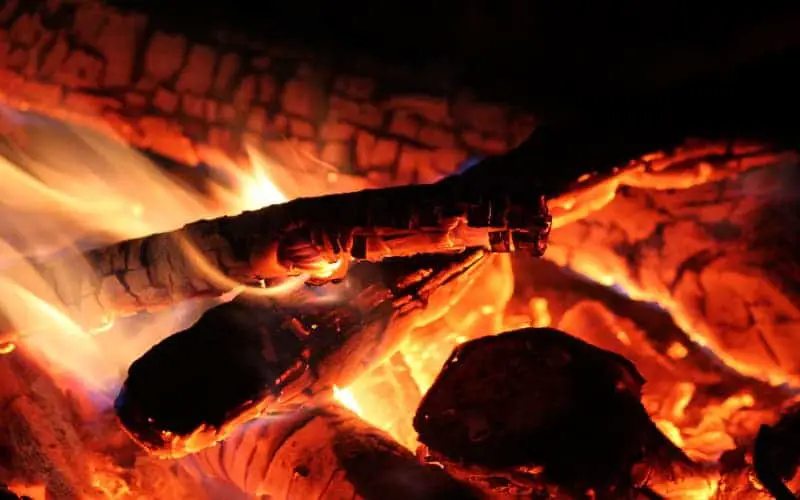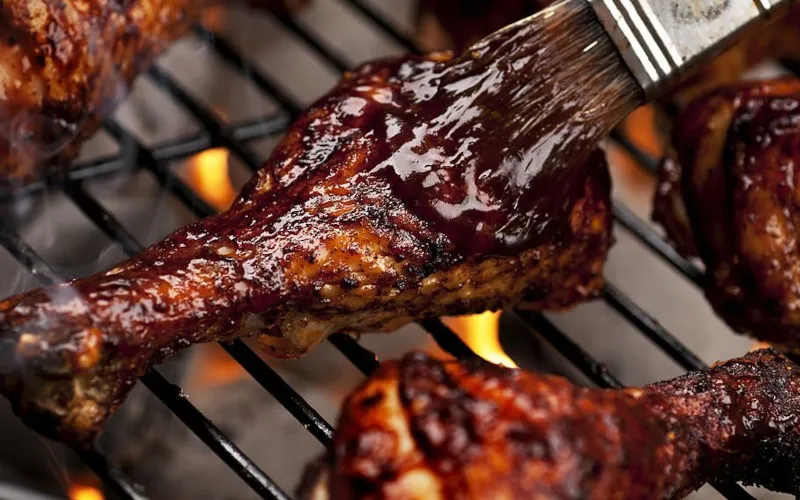As a BBQ enthusiast, I’ve spent many hours smoking brisket, trying to get that perfect bark and tender, juicy meat. I’ve learned over the years that the “brisket stall” is a natural and often frustrating phenomenon.
In this article, I’ll dive into the science behind the brisket stall and share some tips on how to get through it successfully.
What is the Brisket Stall?
The brisket stall is a period during the smoking process when the internal temperature of the meat stops increasing or even drops. This can happen anywhere, but it typically occurs around the 150-160°F mark.
The stall can last anywhere from a few hours to several hours. It can be frustrating for BBQ pitmasters who are eager to see the meat reach its final internal temperature (typically around 190-203°F for brisket).
Related: Best Offset Smokers
Why Does the Brisket Stall Happen?
The brisket stall is caused by a process called “denaturation,” which is the breakdown of proteins in the meat. As the brisket cooks, the heat causes the proteins to coagulate and shrink, releasing moisture. This moisture then evaporates, creating a barrier on the meat’s surface that slows the transfer of heat.
As the internal temperature of the meat approaches the boiling point of water (212°F), the stall becomes more pronounced. This is because the moisture on the surface of the meat is now boiling, creating steam that further insulates the meat and slows down the cooking process.
How to Get Through the Brisket Stall?
The key to getting through the brisket stall is to be patient and let the meat cook slowly.
Here are a few tips to help you get through the stall and finish your brisket successfully:
1. Use a meat thermometer
A meat thermometer is an essential tool for any BBQ pitmaster and is beneficial during the brisket stall. By monitoring the internal temperature of the meat, you can get a better sense of how long the stall is likely to last and when the meat is getting close to its final temperature.
2. Wrap the meat in foil or butcher paper
Wrapping the meat in foil or butcher paper can help speed up the cooking process by trapping heat and moisture. Just be sure to use good quality foil or butcher paper and wrap the meat tightly to prevent steam from escaping.
3. Use the “Texas Crutch”
The “Texas Crutch” is a method of wrapping the meat in foil and adding a liquid (such as apple juice or beef broth) to the foil before sealing it. This helps to add moisture and flavor to the meat and can help speed up the cooking process.
Be careful not to overdo it, as too much liquid can make the meat too moist and prevent the bark from forming correctly.
4. Keep an eye on the temperature
It’s important to keep an eye on the temperature of the meat during the stall and ensure that it’s not dropping too low. If the internal temperature drops below 150°F, increasing the heat on your BBQ pit or smoker is a good idea to help the meat cook more quickly.
Be careful not to overdo it, as too much heat can lead to dry, overcooked meat.
5. Be patient
The most important thing to remember during the brisket stall is patience. Trying to speed up the cooking process can be tempting, but rushing it can lead to subpar results. The key is to let the meat cook slowly and reach its final internal temperature.
Related: Can You Overcook Brisket?
Conclusion
The brisket stall is a common and often frustrating phenomenon for BBQ pitmasters. Still, with patience and the right techniques, you can get through it and produce delicious, perfectly cooked brisket.
Whether you’re using foil, butcher paper, or the “Texas Crutch,” the key is to keep an eye on the temperature and let the meat cook slowly. With a bit of practice, you’ll be a brisket stall pro in no time!
Frequently Asked Questions
How long does the brisket stall typically last?
The brisket stall can be an elusive yet crucial part of the smoking process. During this time, the internal temperature of the meat remains stubbornly in place no matter how many adjustments a pit master makes to their smoker. The stall typically occurs around 150-160°F and can last anywhere from a few hours to multiple hours.
As difficult as it may seem, this is actually an important step that cannot be skipped, as the stall helps to create both tenderness and flavor in your final product. Once you’re past this stage—once your brisket reaches about 190-203°F—you know you’re on your way to a delicious smoked meal.
Can I speed up the brisket stall?
When preparing the perfect brisket, there’s no substitute for patience. Suppressing the urge to crank up the heat and hurry things along is critical; the slower you cook your brisket, the more succulent and flavorful it will be. To get tender, juicy slices of meat with a deep flavor and a crispy bark on the outside, you need to give your meat time to reach its final internal temperature.
This is also known as the “brisket stall,” which is essential for achieving that melt-in-your-mouth texture you want. Put in a little extra time and eat in style – it’ll undoubtedly be worth it!
Can I prevent the brisket stall from happening?
There is no surefire way to prevent the brisket stall from happening, as it is a natural part of the cooking process. However, techniques like wrapping the meat in foil or butcher paper and using the “Texas Crutch” can help minimize the stall and speed up the cooking process.
Is the brisket stall a sign that something is wrong with my BBQ pit or smoker?
Not necessarily. The brisket stall is a normal part of the smoking process and is caused by the breakdown of proteins in the meat. As long as your BBQ pit or smoker operates correctly and maintains a consistent temperature, the brisket stall is nothing to worry about.
Is it OK to open the BBQ pit or smoker during the brisket stall to check on the meat?
It’s generally best to leave the meat undisturbed during the cooking process to avoid losing heat and moisture. However, if you need to check on the meat, use a good-quality meat thermometer to monitor the internal temperature and minimize the time the lid is open.
Can I eat brisket that has been through the brisket stall?
Absolutely! The brisket stall is simply a period during the cooking process and has no impact on the final quality of the meat. As long as the brisket’s internal temperature reaches the recommended 190-203°F, it is safe to eat and should be tender and juicy.





